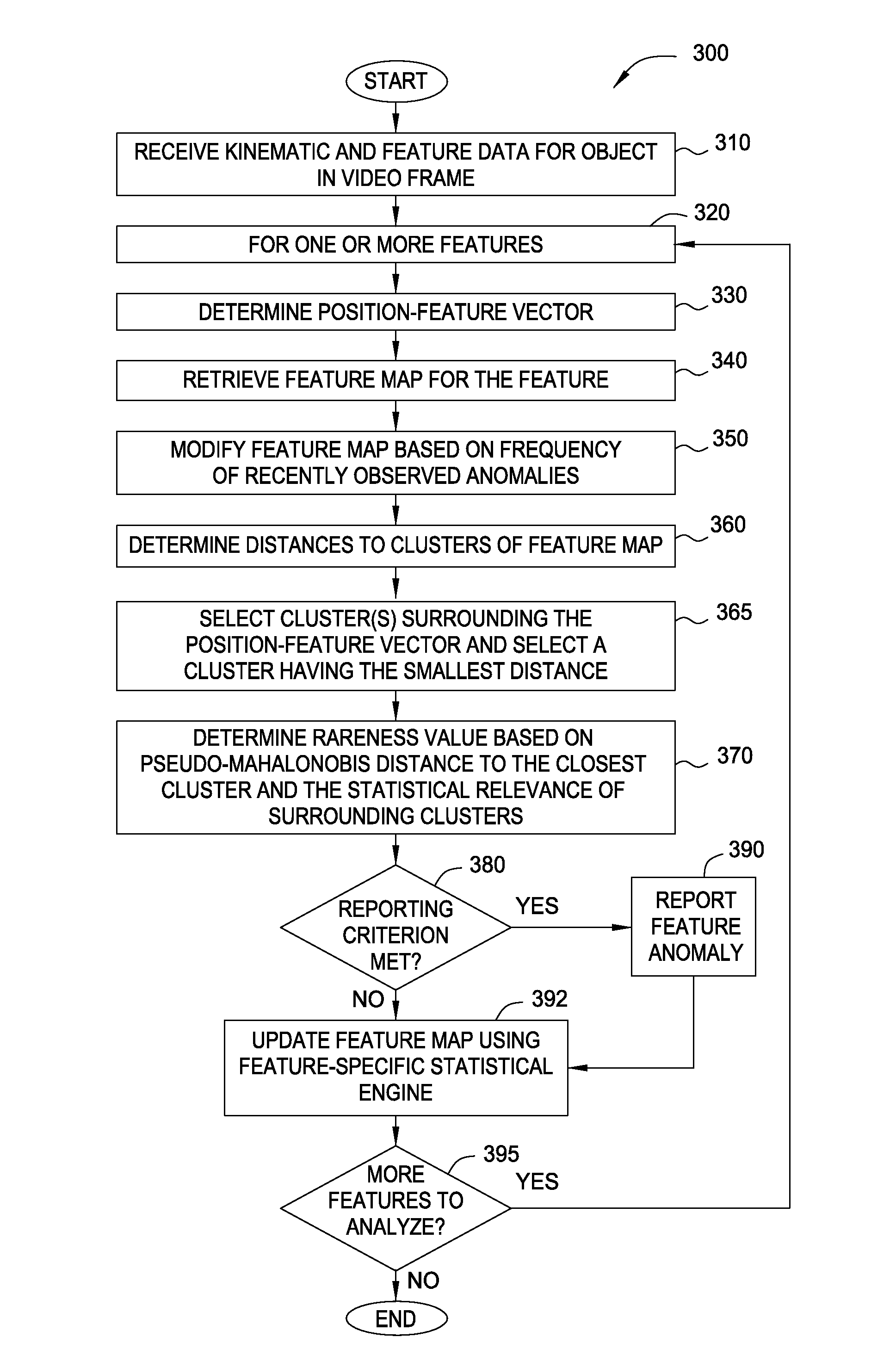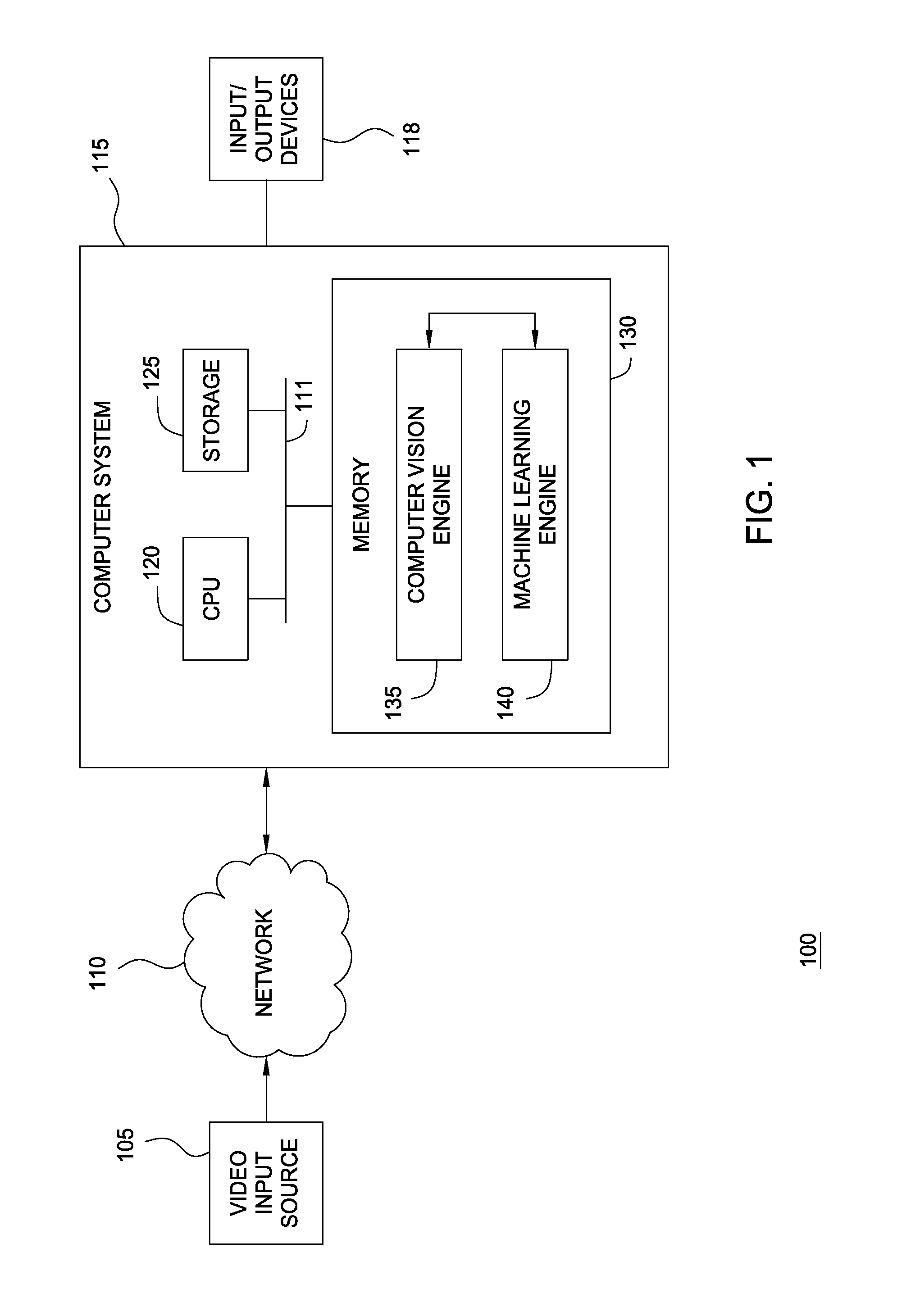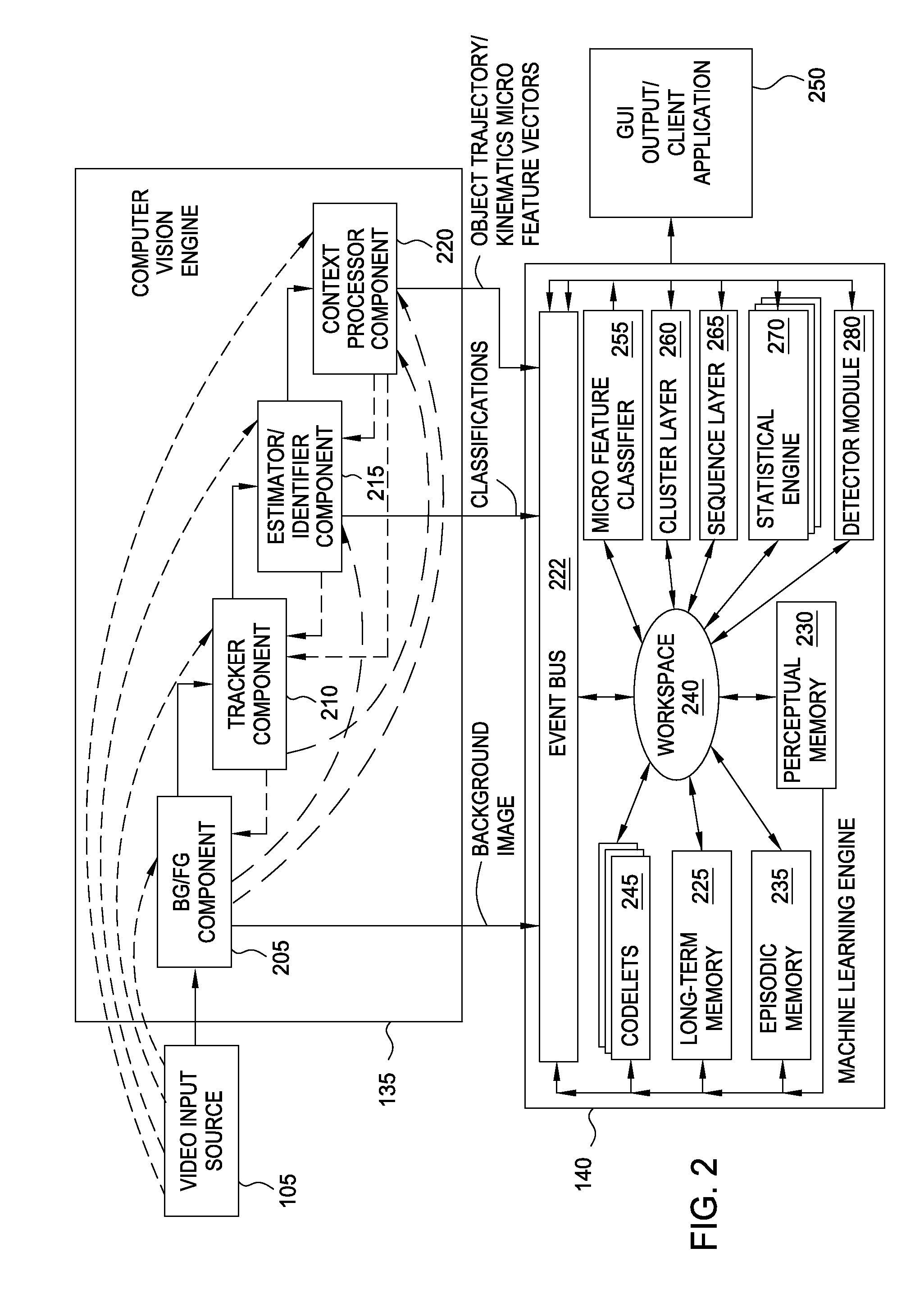Unsupervised learning of feature anomalies for a video surveillance system
a video surveillance system and feature anomaly technology, applied in the field of sequence analysis techniques, can solve problems such as the inability of surveillance systems to identify or update objects, and the inability of surveillance systems to do so
- Summary
- Abstract
- Description
- Claims
- Application Information
AI Technical Summary
Benefits of technology
Problems solved by technology
Method used
Image
Examples
Embodiment Construction
[0015]Embodiments of the present invention provide a method and a system for analyzing and learning behavior based on an acquired stream of video frames. A machine-learning video analytics system may be configured to use a computer vision engine to observe a scene, generate information streams of observed activity, and to pass the streams to a machine learning engine. In turn, the machine learning engine may engage in an undirected and unsupervised learning approach to learn patterns regarding the object behaviors in that scene. Thereafter, when unexpected (i.e., abnormal or unusual) behavior is observed, alerts may be generated.
[0016]In one embodiment, e.g., the machine learning engine may include statistical engines for generating topological feature maps based on observations, as discussed above, and a detection module for detecting feature anomalies. The detection module may be configured to calculate rareness values for observed foreground objects using feature maps generated b...
PUM
 Login to View More
Login to View More Abstract
Description
Claims
Application Information
 Login to View More
Login to View More - R&D
- Intellectual Property
- Life Sciences
- Materials
- Tech Scout
- Unparalleled Data Quality
- Higher Quality Content
- 60% Fewer Hallucinations
Browse by: Latest US Patents, China's latest patents, Technical Efficacy Thesaurus, Application Domain, Technology Topic, Popular Technical Reports.
© 2025 PatSnap. All rights reserved.Legal|Privacy policy|Modern Slavery Act Transparency Statement|Sitemap|About US| Contact US: help@patsnap.com



